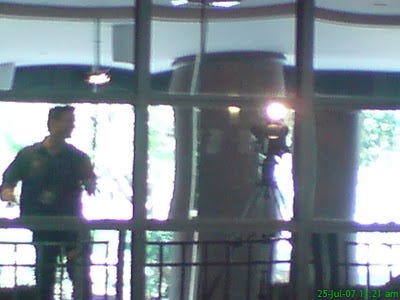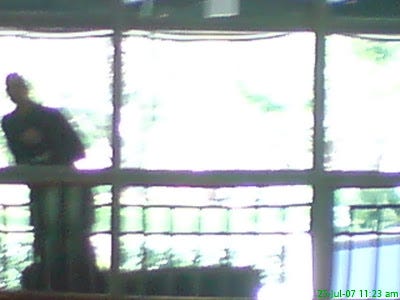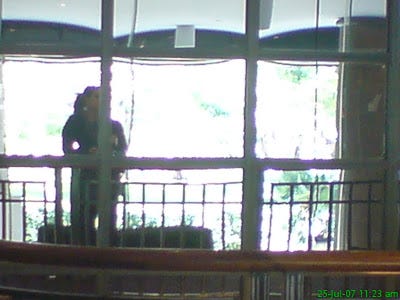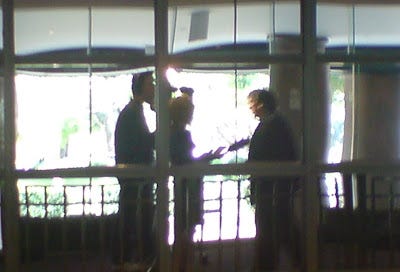*

I sit in one of the dives
On Fifty-second Street
Uncertain and afraid
As the clever hopes expire
Of a low dishonest decade:
Waves of anger and fear
Circulate over the bright
And darkened lands of the earth,
Obsessing our private lives;
The unmentionable odour of death
Offends the September night.
Accurate scholarship can
Unearth the whole offence
From Luther until now
That has driven a culture mad,
Find what occurred at Linz,
What huge imago made
A psychopathic god:
I and the public know
What all schoolchildren learn,
Those to whom evil is done
Do evil in return.
Exiled Thucydides knew
All that a speech can say
About Democracy,
And what dictators do,
The elderly rubbish they talk
To an apathetic grave;
Analysed all in his book,
The enlightenment driven away,
The habit-forming pain,
Mismanagement and grief:
We must suffer them all again.
Into this neutral air
Where blind skyscrapers use
Their full height to proclaim
The strength of Collective Man,
Each language pours its vain
Competitive excuse:
But who can live for long
In an euphoric dream;
Out of the mirror they stare,
Imperialism's face
And the international wrong.
Faces along the bar
Cling to their average day:
The lights must never go out,
The music must always play,
All the conventions conspire
To make this fort assume
The furniture of home;
Lest we should see where we are,
Lost in a haunted wood,
Children afraid of the night
Who have never been happy or good.
September 1, 1939
by W. H. Auden

Whole swathes of the landscape were breaking away, constipated, the groaning ice sheets, the crystal world of ocean and ice, we were reflections then, emerging into a bright bright world. He didn't understand. He didn't know what their motives were. He formed a rigid self, unaccustomed as we are. He stood tall and strong, unaccustomed as we are. All around the war played out on television screens, the subject of an endless news feed. Their own lives were tiny now in contrast to the magnitude of world events; and the giant personalities that had once populated the mythical village of his childhood, that place hundreds perhaps thousands of years ago, that place from whence his historical memory had come, they had all disappeared in the crowded, congested river of modern times.
His depression had lifted and he didn't know who he was any more. It was cruel; and he expected once more to be draped in a terrible psychic pain, to wrap his despair around him like a comforting cloak; familiar. His dogged personality was bound to fight its way through, to survive. But suddenly there was nothing to survive. He simply wasn't depressed any more. The cowering dwarf ducking behind shadows, ashamed, desperate to hide, was no longer there. Following, perhaps, the deformed little bunny hidden behind seven screens which had been his real self, impossible to get to, maintained by a steady diet of chemicals and frequent attempts at obliteration, a steady diet of secrecy and despair.
These things had disappeared in an organic flash. The screens had collapsed when they had carried him into a detox, and he had paced endlessly up and down the shabby corridors of the old hospital. He wasn't a detox virgin, he had been there on several occasions, living out the week, pacing, pacing. The malevolent trees which dotted the Rozelle lawns had grown larger and come closer over his frequent admissions. The staff changed. The ideologies of rehabilitation changed. But he didn't. They couldn't get to him; not behind so many screens. Abolish one, break down one in those endlessly intense interviews, and there was always another to slip behind.
No one was going to get to him because he was ashamed of what was there. That face, that deformed little face, the shrunken, naked body, deformed of heart and deformed of soul, cowering behind there, still frightened despite all the walls protecting it, still desperately sad, achingly lonely, there in that strange nether world. He was convinced there would be no happy ending; that it was simply a matter of survival. And the best way to survive was to hide. The day it all collapsed, this elaborate infrastructure, he didn't know what to do.
He could see the walls collapsing; bang, bang, splintering onto the floor; not just the first wall but all the walls, bang, bang, bang. And then standing naked in the dazzling light, there exposed for the very first time, was the strangest, ugliest, most malformed of creatures; naked and frightened. And then the light streaming in acted just as effectively as a bucket of boiling water across naked skin, and it ran around in tight little cicrcles screaming, and then moments later just disappeared. Never to be seen again.
What was next - the creation of new structures? Here in a solipsistic universe where other characters were only slow to form; fresh armour, fresh coating, the clown, the fool, the quiet, the wise. The laughable. He shrugged, they all shrugged, these tiny
threads of sanity, of continuous thought, an agglomeration of traits. New paths always splintered into white light, barely five metres distant. He couldn't see very far at all. This was the new path, so quiet, so humble, so astounding. Adventure piled upon adventure, travel against travel, and he found a new way to enjoy the day. I was a miserable sod, someone said, saying they had never known any one so consistently sad. That was it; it just didn't exist anymore.

THE BIGGER STORY:
http://news.smh.com.au/breaking-news-national/500-firies-battling-daylesford-blaze-20090224-8g16.html
500 firies battling Daylesford blaze
February 24, 2009 - 7:19AM
About 500 firefighters are battling to contain a 2,800 hectare bushfire burning northwest of Melbourne.
Eight aircraft and 96 tankers were in place near Daylesford and surrounding communities, a Country Fire Authority (CFA) spokeswoman said on Tuesday.
The Muskvale Hogans Road fire is burning five kilometres south of Daylesford in an easterly direction
Meanwhile, firefighters have contained a 300ha blaze near Upwey, about 40km from Melbourne's CBD, which started about 2.30pm (AEDT) on Monday and spread through the Birdlands Reserve.
The CFA and Department of Sustainability and Environment (DSE) confirmed on Tuesday that no houses had been lost in the blaze, but two sheds were destroyed.
"We bombed that fire heavily from the air and managed to save all houses," DSE spokesman Stuart Ord told the Nine Network.
"Today we'll sit on that, we'll make sure everything is blacked out and really get that one totally controlled."
Two firefighters suffered minor burns while battling the Upwey blaze, one fire truck was destroyed and another was damaged.
Mr Ord said both firefighters were taken to hospital and one had been released.
He said it was crucial that other fires burning around the state, including the blaze near Daylesford, were brought under control before Friday.
http://www.theaustralian.news.com.au/story/0,25197,25097878-2702,00.html
DEMANDS from Opposition MPs that Australia's proposed emissions trading scheme be shelved because of the global financial crisis have overshadowed growing unrest in government ranks about climate change policy.
As pressure on Malcolm Turnbull over the issue escalated yesterday, Kevin Rudd renewed his pledge to introduce an ETS amid tension among some of his key political allies in the Labor Party's NSW Right faction who fear the scheme will be political poison and cost jobs.
The backbench nervousness emerged yesterday after the Opposition Leader said on Sunday he would deliver policies for carbon emission reductions greater than those proposed by the Prime Minister, who intends to begin an ETS next year.
While Mr Turnbull named no particular target for reductions, he said his plans to promote more efficient building design and to store carbon emissions in the soil would deliver greater emission reductions than carbon trading alone.
The Government proposes reducing carbon emissions by 5 per cent by 2020 and up to 15 per cent if other nations also commit to reductions. Several Coalition MPs told The Australian yesterday Mr Turnbull needed to be more cautious on climate change, with several calling for the ETS to be shelved.
Former Opposition leader Brendan Nelson said putting a price on carbon was the equivalent of creating a new tax -- an action that would be madness at a time of global economic recession.
"Many Australians are losing or are going to lose their jobs, and almost all Australians are quite concerned about the security of their employment and keeping their home and being able to feed, clothe and house their children," Dr Nelson told The Australian yesterday. "If, to use the Prime Minister's words, this ( crisis) is the equivalent of a rolling national security crisis ... would you seriously introduce into that a tax?"
http://www.climatechangefraud.com/content/view/3384/236/
Media Credibility, Not Ice Caps, In Meltdown Print E-mail
Written by Peter C Glover, American Thinker
Monday, 23 February 2009
wilkins_ice_shelf.jpg
Wilkins Ice Shelf
Eco-warriors and media hype aside, the fact is, as we head into 2009, that the world's ice mass has been expanding not contracting. Which will surprise evening news junkies fed a diet of polar bears floating about on ice floes and snow shelves falling into the oceans. But if a whole series of reports on ice growth in the Arctic, the Antarctic and among glaciers are right, then it is truth in the mainstream media (MSM) that's in meltdown not the polar ice caps.
The problem for the MSM is that it long ago nailed its colors to the climate alarmist mast. No ice cap meltdown, no rising waters. No disappearing islands, no reason for alarm. No alarm, no story. Worst of all having called yet another global apocalypse wrong: No credibility. So the MSM has a significant stake in running highly selective warm-mongering headlines. Not to mention disparaging those scientists who have the temerity to disagree as 'holocaust deniers' and 'pseudo-scientists'.
There's nothing more the climate alarmist media loves than a 'melting Arctic' ice cap story. So why not stories from the far larger expanse of ice that is the 'melting' Antarctic? Well it might have something to do with the fact that the Antarctic ice grew to record levels in 2007 - and continues to grow.
The Antarctic
Climate scientist Dr Ben Herman, past director of the Institute of Atmospheric Physics and former head of Atmospheric Sciences at the University of Arizona, notes that for the media, "What happens in the Arctic may be an indicator of what will happen in the rest of the world. How about what happens in the Antarctic then? Since its ice area has been increasing, is this also an indicator of what might be happening in the rest of the world?" The FACT is that the majority of Antarctica has cooled over the past 50 years and ice coverage has grown to record levels. Take the well-publicized collapse of a 160 square mile block of the Wilkins Ice Shelf in Antarctica in March 2008. For the alarmist media this was conclusive proof of the dramatic global warming effects. The Los Angeles Times ran, 'Antarctica Collapse' referring to the "rapid melt of the Wilkins Shelf". The Sydney Morning Herald ran 'Ice Shelf Hangs By a Thread' and the Salon online news site had the absurd headline 'Bye-bye Antarctica?' But Joseph D'Aleo, first Director of Meteorology at The Weather Channel and Chief Meteorologist at Weather Services International, was more prosaic. On his IceCap website, D'Aleo wrote that the collapse was the equivalent, given the enormity of Antarctica, of "an icicle falling from a snow and ice covered roof." He added, "The latest satellite images and reports suggest the ice has already refrozen around the broken pieces. In fact the ice is returning so fast, it is running an amazing 60 percent ahead of last year when it set a new record." Noting the ludicrous media hype, D`Aleo laments, "Yet the world is left with the false impression Antarctica's ice sheet is also starting to disappear."




